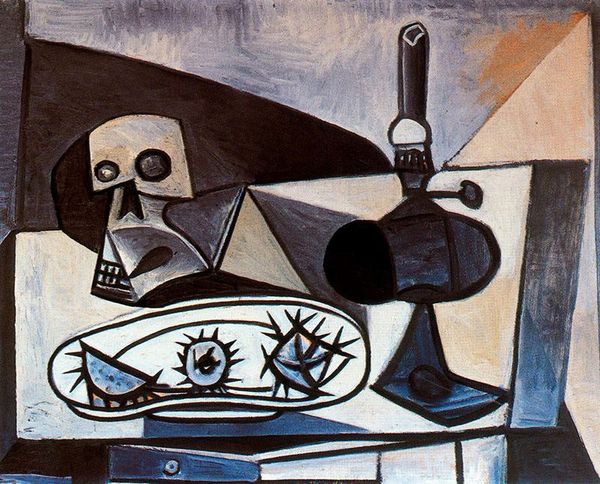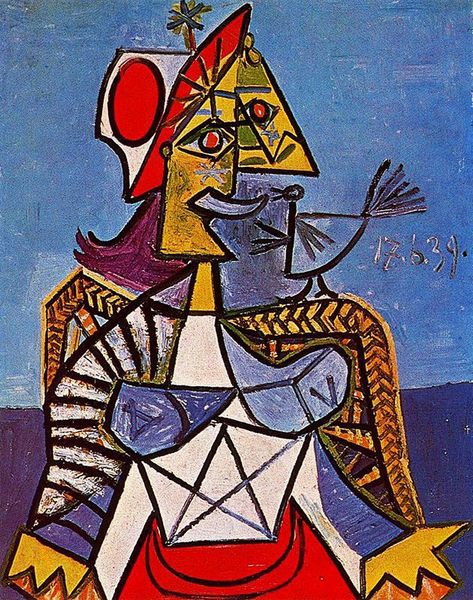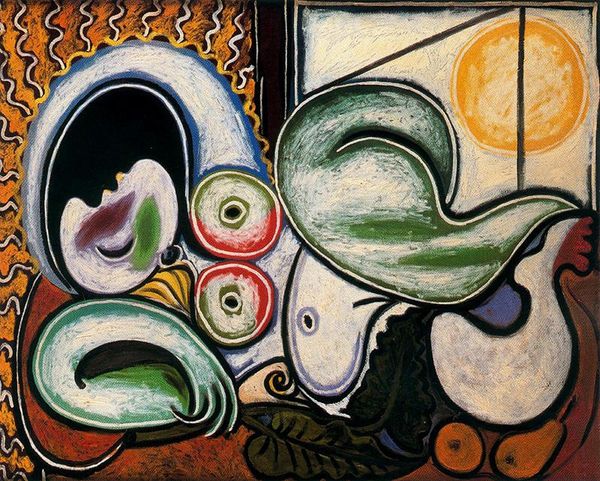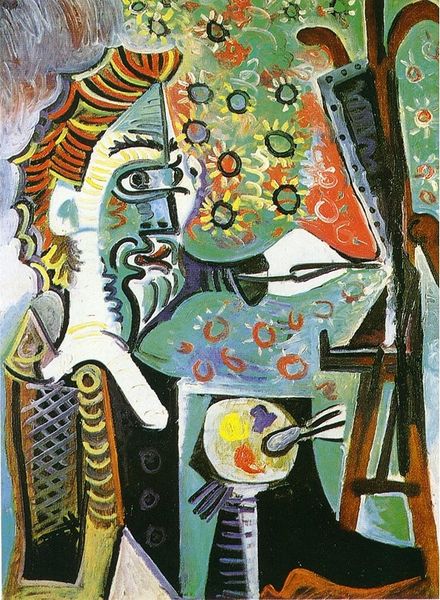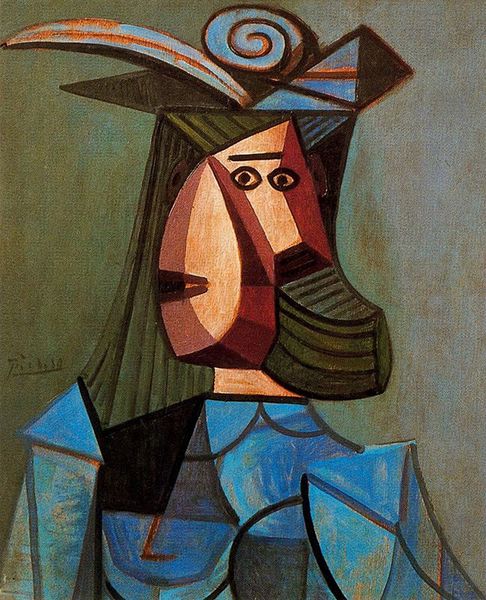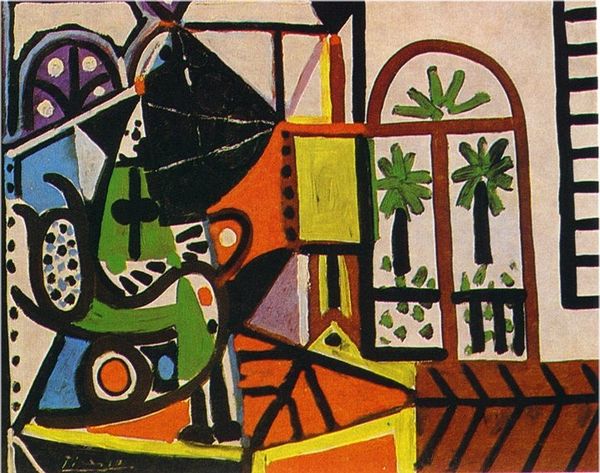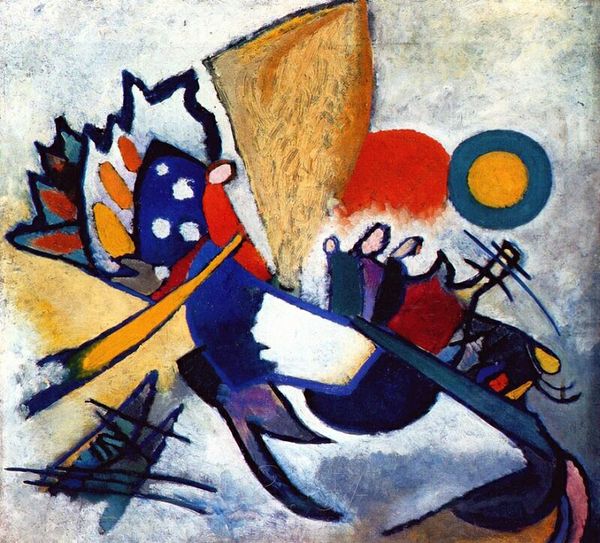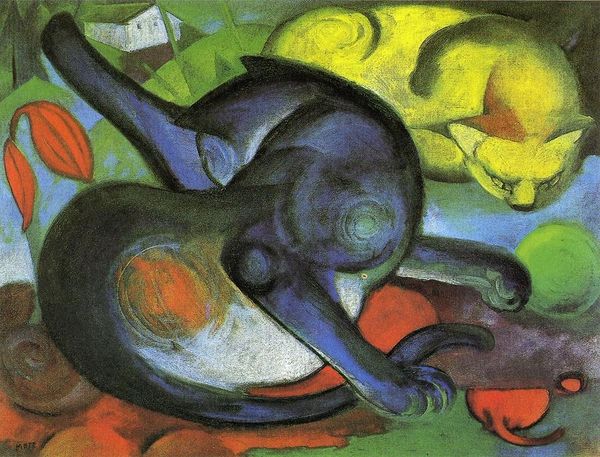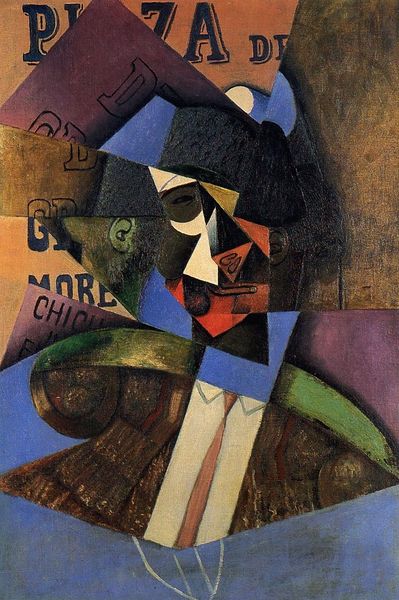
Still life with bull's skull 1939
0:00
0:00
pablopicasso
Cleveland Museum of Art (CMA), Cleveland, OH, US
Copyright: Pablo Picasso,Fair Use
Editor: This is Picasso’s "Still Life with Bull's Skull," painted in 1939. It’s a striking oil painting, and that skull really jumps out. What’s fascinating to you about this piece? Curator: The enduring power of images, wouldn't you agree? A skull immediately conjures mortality, loss. Picasso painted this on the cusp of World War II. Do you think that's significant, as a cultural symbol? Editor: Absolutely, the timing seems crucial. The bull's skull, placed so prominently… It definitely feels like a looming presence. What else do you notice about the imagery at play here? Curator: The geometric shapes forming the backdrop are chaotic yet contained, right? Notice how the patterned jug almost seems to mimic organic life despite its artificiality, a defiance against the starkness of the skull. And that lone tree beyond…it’s barely clinging to existence, wouldn't you say? Editor: I see what you mean. There's a definite tension between life and death. But the geometric forms make it hard to grasp easily… It is so disjointed! Is that tension what makes the piece feel so powerful? Curator: Precisely. Fragmentation is its language. He’s dismantling traditional still life. Remember, Picasso lived through immense shifts. His work isn't just representing the world, it's actively grappling with its unraveling. It reflects memory, trauma, but perhaps even a stubborn refusal to yield to despair. Editor: It’s amazing how much historical weight and emotional nuance can be embedded in such a seemingly simple composition. Curator: And that's the ongoing cultural conversation, right? How do symbols resonate, mutate, and haunt our collective consciousness? Food for thought.
Comments
No comments
Be the first to comment and join the conversation on the ultimate creative platform.
